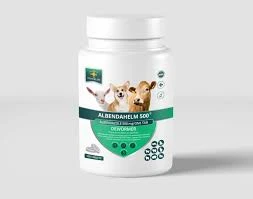- Afrikaans
- Albanian
- Amharic
- Arabic
- Armenian
- Azerbaijani
- Basque
- Belarusian
- Bengali
- Bosnian
- Bulgarian
- Catalan
- Cebuano
- Corsican
- Croatian
- Czech
- Danish
- Dutch
- English
- Esperanto
- Estonian
- Finnish
- French
- Frisian
- Galician
- Georgian
- German
- Greek
- Gujarati
- Haitian Creole
- hausa
- hawaiian
- Hebrew
- Hindi
- Miao
- Hungarian
- Icelandic
- igbo
- Indonesian
- irish
- Italian
- Japanese
- Javanese
- Kannada
- kazakh
- Khmer
- Rwandese
- Korean
- Kurdish
- Kyrgyz
- Lao
- Latin
- Latvian
- Lithuanian
- Luxembourgish
- Macedonian
- Malgashi
- Malay
- Malayalam
- Maltese
- Maori
- Marathi
- Mongolian
- Myanmar
- Nepali
- Norwegian
- Norwegian
- Occitan
- Pashto
- Persian
- Polish
- Portuguese
- Punjabi
- Romanian
- Russian
- Samoan
- Scottish Gaelic
- Serbian
- Sesotho
- Shona
- Sindhi
- Sinhala
- Slovak
- Slovenian
- Somali
- Spanish
- Sundanese
- Swahili
- Swedish
- Tagalog
- Tajik
- Tamil
- Tatar
- Telugu
- Thai
- Turkish
- Turkmen
- Ukrainian
- Urdu
- Uighur
- Uzbek
- Vietnamese
- Welsh
- Bantu
- Yiddish
- Yoruba
- Zulu
Kas . 20, 2024 04:54 Back to list
avermectin pour on solution how to use
How to Use Avermectin Pour-On Solution
Avermectin pour-on solution is a broad-spectrum antiparasitic treatment primarily used in livestock to control a variety of external and internal parasites. This formulation is particularly popular in cattle, sheep, and goats for its ease of application and effectiveness. Understanding how to properly use this solution is crucial for effective parasite management and ensuring the health of your livestock.
What is Avermectin?
Avermectin is a derivative of the natural fermentation product of the bacterium *Streptomyces avermitilis*. It acts as a potent neurotoxin to parasites, leading to their paralysis and death. The pour-on formulation allows for quick and convenient administration, making it suitable for large-scale livestock operations. It is effective against a variety of parasites, including lice, mites, and certain gastrointestinal worms.
Dosage and Administration
To ensure maximum efficacy, it is essential to follow the manufacturer's instructions regarding dosage. Avermectin is typically administered at a specific dose rate per weight of animal. For example, the usual dosage might be around 0.5 to 1.0 mL for every 10 kilograms of body weight. It is crucial to weigh your livestock accurately to determine the correct dose, as under-dosing can lead to treatment failures and over-dosing can cause adverse effects.
The application should be done in a well-ventilated area. The pour-on solution should be applied along the topline of the animal, starting from the withers down to the base of the tail. This method ensures that the solution spreads evenly over the animal’s skin. Avoid contact with the eyes and mucous membranes during application, and wash hands thoroughly after handling the solution.
Timing of Treatment
avermectin pour on solution how to use

The timing of treatment plays a significant role in its effectiveness. Avermectin is most effective when used before an expected surge in parasite populations, such as in early spring for external parasites or fall for internal parasites. Regular monitoring of your livestock’s health and parasite load will help you determine the best times for application. In addition, managing pasture rotation can help reduce re-exposure to parasites.
Safety Considerations
Safety is paramount when using medications in livestock. Avermectin is generally considered safe for use in most healthy animals. However, it is important to observe any withdrawal periods specified by the manufacturer. This is a period during which the treated animals should not be slaughtered for meat or milk to avoid drug residues in food products. Always check the specific guidelines related to withdrawal times for the species being treated.
Possible Side Effects
While generally safe, some animals may experience mild side effects, such as temporary lethargy or localized skin reactions. Severe allergic reactions are rare but can occur. If any signs of adverse reactions are observed, it is essential to contact a veterinarian immediately.
Conclusion
Avermectin pour-on solution is an effective tool for managing parasitic infections in livestock when used correctly. Following proper dosage guidelines, application techniques, and safety measures can significantly enhance the health and productivity of your animals. Regular monitoring and proactive management of parasite loads are essential in maintaining a healthy herd. Always consult your veterinarian or an animal health professional if you have questions or concerns about using avermectin or any other medications in your livestock management program.
-
Guide to Oxytetracycline Injection
NewsMar.27,2025
-
Guide to Colistin Sulphate
NewsMar.27,2025
-
Gentamicin Sulfate: Uses, Price, And Key Information
NewsMar.27,2025
-
Enrofloxacin Injection: Uses, Price, And Supplier Information
NewsMar.27,2025
-
Dexamethasone Sodium Phosphate Injection: Uses, Price, And Key Information
NewsMar.27,2025
-
Albendazole Tablet: Uses, Dosage, Cost, And Key Information
NewsMar.27,2025













